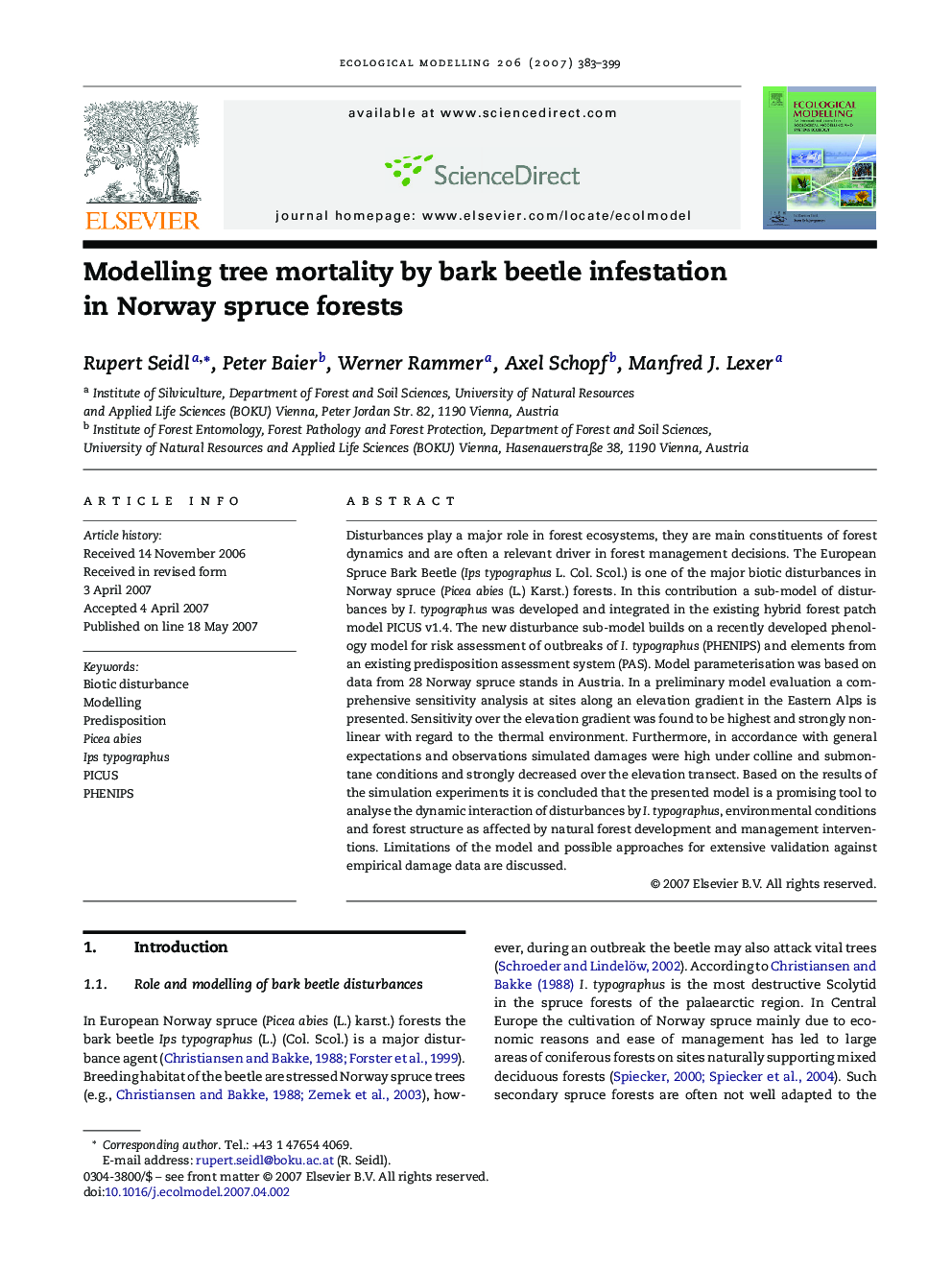| Article ID | Journal | Published Year | Pages | File Type |
|---|---|---|---|---|
| 4378650 | Ecological Modelling | 2007 | 17 Pages |
Abstract
Disturbances play a major role in forest ecosystems, they are main constituents of forest dynamics and are often a relevant driver in forest management decisions. The European Spruce Bark Beetle (Ips typographus L. Col. Scol.) is one of the major biotic disturbances in Norway spruce (Picea abies (L.) Karst.) forests. In this contribution a sub-model of disturbances by I. typographus was developed and integrated in the existing hybrid forest patch model PICUS v1.4. The new disturbance sub-model builds on a recently developed phenology model for risk assessment of outbreaks of I. typographus (PHENIPS) and elements from an existing predisposition assessment system (PAS). Model parameterisation was based on data from 28 Norway spruce stands in Austria. In a preliminary model evaluation a comprehensive sensitivity analysis at sites along an elevation gradient in the Eastern Alps is presented. Sensitivity over the elevation gradient was found to be highest and strongly non-linear with regard to the thermal environment. Furthermore, in accordance with general expectations and observations simulated damages were high under colline and submontane conditions and strongly decreased over the elevation transect. Based on the results of the simulation experiments it is concluded that the presented model is a promising tool to analyse the dynamic interaction of disturbances by I. typographus, environmental conditions and forest structure as affected by natural forest development and management interventions. Limitations of the model and possible approaches for extensive validation against empirical damage data are discussed.
Related Topics
Life Sciences
Agricultural and Biological Sciences
Ecology, Evolution, Behavior and Systematics
Authors
Rupert Seidl, Peter Baier, Werner Rammer, Axel Schopf, Manfred J. Lexer,
